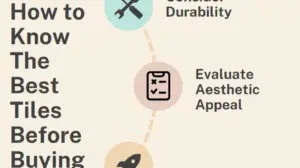The common belief that the oldest country in the world is still a dominant global power is often inaccurate.
Iran, established in 3200 B.C., holds the distinction of being the oldest country in the world.
It might surprise many to discover the true pioneers of nationhood.
While a few maintain political influence, others have faced subjugation by global powers and colonialism.

Explore the world’s oldest countries and their histories.
1.Iran: The Oldest Country In The World
Iran, founded in 3200 B.C., straddles the Middle East and Asia, sharing borders with Iraq, Turkey, Afghanistan, and Pakistan.
Tehran is the capital, and Iran has over 86 million inhabitants.

Its terrain is mountainous, and climate varies in terms of precipitation and temperature.
While the southeast receives about 2 inches of rain annually, the Caspian Sea region enjoys approximately 78 inches.
The overall climate is warm with fluctuating humidity.
Plant life in Iran is diverse, depending on factors like precipitation and topography.
Deserts have brush and shrubs, while 10% of the country is forested, with oak, walnut, and elm trees near the Caspian Sea.
Wildlife includes bears, hyenas, leopards in forests, foxes, rodents in semi-arid areas, and diverse bird and fish species in the Caspian Sea.
Also Read: Richest Family In The World
2.Egypt,Second Oldest Country In The World
Established circa 3100 B.C., Egypt is situated in the northeast of Africa, with the Mediterranean Sea, Israel, Libya, and Sudan as its neighbors.
Cairo serves as the capital, and the nation is home to around 104 million people.
Ancient Egyptian society boasted advanced technology and literacy.
While pharaohs held sway for millennia, Egypt witnessed conquests by Greece, Rome, and Arab empires over a span of 900 years.
The Nile River supports Egypt’s agriculture, surrounded by vast deserts like the Western and Eastern Deserts, with the Sinai Peninsula being smaller but significant.
Egypt’s climate is dry with mild winters and scorching summers.
Sandstorms, around 50 days annually, may result from tropical air currents.
The north, bordering the Mediterranean Sea, is more humid than the south.
Western Desert: Sparse plant life, while the Eastern Desert hosts acacia, tamarisk, and succulents.
Abundant plant life near the Nile, with 100+ grass species, but the papyrus plant has declined.
Common countryside animals: camels, goats, and buffalo.
Crocodiles are present in specific regions; once-native species like hippopotamuses and giraffes are absent.
Diverse fish and bird species, including the hooded crow, black kite, and Nile perch, inhabit Egyptian waters and skies.
3.Vietnam
Vietnam, established in 2879 B.C., lies in the eastern part of Southeast Asia.
Hanoi is the capital, and the population exceeds 99 million.
Cambodia, Laos, and China border Vietnam, with China having a significant historical influence.
Vietnam’s landscape features the Annamese Cordillera mountains, two deltas, and a coastal plain.
The highest point, Fan Si Peak, reaches 10,312 feet.
Key rivers include the Red River, Mekong River, and Black River.
Vietnam’s climate is predominantly warm and tropical, with an average annual temperature of 74°F.
Monsoons bring heavy rain and typhoons in summer and fall.
Vietnam boasts rich biodiversity due to varied climate and topography.
Abundant plant life: evergreen and deciduous forests, 1,500+ tree species, mangroves, ebony.
Limited rainforest areas.
Exotic wildlife: elephants, tapirs, tigers, snow leopards.
Domesticated animals: cattle, pigs, fowl, goats.
Also Read: The Richest Actor In The World
4.Armenia
Armenia, founded in 2492 B.C., shares borders with Georgia, Azerbaijan, Turkey, and Iran.
The capital, Yerevan, houses over 35% of Armenia’s three million citizens.
Ancient Armenia was larger but lost territory due to Persian and Ottoman conquests and oppression.
Armenia features high elevations, with an average of 5,900 feet, and most land above 3,300 feet.
Rivers cut through plateaus and mountains, with notable features like the Sevan Basin, Ararat Plain, and Mount Aragats.
Earthquakes are a concern, causing damage and casualties.
The country’s small area and numerous mountain ranges result in a dry, hot climate.
Summer averages around 77°F, while winters reach 23°F in the coldest months, with elevation causing temperature variations.
Armenia houses 3,000+ plant species categorized into five main groups.
Semidesert regions feature sagebrush and juniper.
Animal life varies by region, with jackals and scorpions in semideserts and lynxes and woodpeckers in forests.
5.North Korea
North Korea’s government traces back to 2333 B.C.
P’yongyang is the capital, and the population exceeds 25 million.
Located north of South Korea on the Korean Peninsula, with Russia and China as neighbors.
Mountainous topography, including the Kaema Highlands and Mount Peaktu, with river valleys enhancing the landscape.
Cold winters (average -10°F to 20°F) and relatively cold year-round climate, with the East Coast slightly milder.
Coniferous trees in highlands, oak and maple in lowlands.
Western lowlands affected by deforestation, impacting animal populations like deer, goats, tigers, and leopards.
6.China
China’s legitimate government dates back to 2070 B.C.
China has the third-largest landmass globally, covering 7.14% of the world’s land.
Neighbors include Russia, Mongolia, India, and Vietnam.
The capital is Beijing, with a population exceeding 1.4 billion.
Mount Everest, at 29,035 feet, straddles the China-Nepal border, while the Turfan Depression is China’s lowest point at 508 feet below sea level.
The northern coast is flat, while the southern coast features rocky terrain.
Frequent earthquakes have claimed millions of lives in the region.
China’s climate varies due to its large size and diverse topography.
Annual temperature averages range from 32°F to 68°F, varying by region.
Precipitation varies significantly, with over 80 inches of rainfall on the southeastern coast and 20 to 35 inches along the Huang He.
Impressive biodiversity in China with 30,000+ plant species adapted to various climates.
Native animals include the giant salamander and giant panda, contributing to the country’s rich biodiversity.
The Tibet and Sichuan regions offer the most diverse range of animal life.



















































